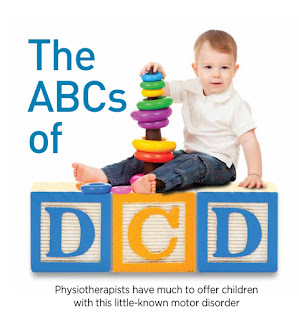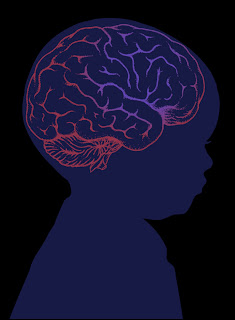" THAT DISTINCT X."- FRAGILE X SYNDROME & PHYSICAL THERAPY - BY DR. VANDANA PATEL (PT)
Fragile X syndrome (FXS) is the most common form of inherited intellectual disability (ID) and the most common genetic cause of autism. It is characterized by a broad spectrum of morphologic, cognitive, behavioral, and psychologic features. Fragile X is an inherited genetic condition, if a person finds out they have the premutation or full mutation; other family members may also be carriers and/or may have a Fragile X associated condition. There is also a risk of passing the Fragile X premutation or full mutation on to children.
FRAGILE X SYNDROME = MARTIN BELL SYNDROME
Etiology/Types
■ X-linked dominant inheritance
■ FXS is caused by decreased or absent levels of fragile X mental retardation protein (FMRP).
■ FXS is caused by a full mutation: >200 CGG repeats on the fragile mental retardation gene (FMR1) located in chromosome Xq27 (CGG indicates a repeated sequence of chemical bases on FMR1 gene)
■ Premutation 55–200 CGG repeats on the FMR1 gene, leads to primary ovarian insufficiency, fragile X associated tremor ataxia syndrome (FXTAS), neuropathies, and milder cognitive and behavioral difficulties
■ Severity of physical phenotype and intellectual impairment correlates with the magnitude of the FMRP deficit
■ Prader-Willi phenotype of FXS: subgroup of males with hyperphagia and obesity with negative results for Prader-Willi molecular testing
Epidemiology
■ FXS is the most common cause of inherited Intellectual Disabilities: – Males: 1/3600 – Females: 1/ 4000 to 6000
■ Incidence of the premutation: 1/130–250 females and 1/250–800 males
■ 2% to 7% children with autism have a mutation in the FMR1 gene
■ Prevalence of autism in children with FXS ranges from 20% to 35% Pathogenesis
■ Genetic defect Xq27 Risk Factors
■ Familial inheritance
■ Spontaneous mutation risk factors are unknown
Clinical Features
■ Male phenotypic features of full mutations vary by age: –
Prepubertal boys: >50th percentile head circumference, late motor and speech milestones, abnormal behavior, and autism
Pubertal boys: long face, prominent forehead, large ears, prominent jaw, and large genitalia
■ Facial features in females are rarely noted
■ Connective tissue problems: ligamentous laxity, velvet-like skin
■ Flat feet
■ Heart murmurs
■ Hypotonia
■ Seizures: 15% of males, 5% of females
■ Eighty percent of males have cognitive delays and ID
■ Fifty percent of females with full mutation have ID and 35% have IQ < 85
■ Behavioral difficulties: attention deficit hyperactivity disorder (ADHD), autistic related behavior, hand flapping, chewing/biting, sensory processing problems, tics, anxiety, coprolalia, psychosis, and schizophrenia
■ Infancy: normal or slightly delayed milestones
■ Childhood: fine motor skill deficits, severe language and expressive speech problems, and cognitive and behavioral impairments are noted
■ Normal life span
Differential diagnosis
■ Ehlers-Danlos syndrome
■ Pervasive developmental disorders
■ Autism
■ ADHD
■ Rett’s syndrome
■ Prader Willi syndrome
■ Soto’s syndrome
■ Lujan-Fryn’s syndrome
ASSESSMENT
History
■ Developmental delays
■ Behavioral difficulties
■ Family history
Examination
■ Males show pubertal facial features: long face, prominent forehead, large ears, and prominent jaw, as well as large genitalia
■ Connective tissue problems, including ligamentous laxity, and velvet-like skin
■ Flat feet, scoliosis, and pectus excavatum
■ Recurrent ear infections
■ High arched palate
■ Decreased visual acuity
■ Heart murmurs
■ Hypotonia
Testing
■ FMR1 DNA testing
■ High-risk screening is recommended in children with autistic behavior and family history of IDs
■ Screening is recommended for individuals with features of FXS, learning disabilities, females with primary ovarian insufficiency, and adults with FXTAS
■ Neuro-imaging may reveal: enlarged hippocampal volumes, large cerebrum with small posterior cerebellar vermis, and larger hypothalamus
■ Electroencephalogram
TREATMENT
Medical
■ No cure
■ Pharmacological management of behavior: stimulants, clonidine, guanfacine, SSRI’s, and antipsychotics
■ Early intervention: behavioral therapy, occupational therapy, speech therapy, sensory integration therapy
■ Treatment of seizures
PHYSIOTHERAPY TREATMENT:
To promote independence in activities of daily living and improve quality of life in children with FXS.
Aims of Physiotherapy treatment:
- To Improve mobility
- To Increase ability to transfer
- To Increase muscle tone
- To improve balance and co-ordination
- To Increase muscle strength
- To Increase exercise tolerance and stamina
- To Increase confidence and motivation
- To Improve social skills
Physical therapy treatments can significantly help child with FXS. Physical therapy can be taken at school, clinic or home and the progress of the child can be marked on daily basis.
Physical therapy treatments will specifically focus upon:
- Strengthening exercises for hypotonia HYPOTONIA IN DETAIL
- Stretching exercises
- Developmental sequencing by using different positioning and practicing the normal milestones practices
- The child can be trained for gross motor activities with the created / virtual environment
- Transfer and mobility activities can be trained by training the child for rolling, crawling, sit to stand, walking etc.
- Postural deformity corrections can be trained at the early stages of live in order to prevent the progression
- Fine motor activities training by peg- board exercises, holding pen and practicing writing, grip strength activities, etc.
- Balance exercises can be given to this child using BOSU ball, wobble board and walking on different surfaces.
- Sensory reeducation can be incorporated in order to improve attention, IQ deficits as well as for sensory seeking behaviors
- The overall fitness of the child with FXS can be improved by cardiovascular fitness training.
❎❌❎❌❎❌❎
REFERENCES:
IMAGE: Women’s Health and the Fragile X Premutation, Sherman and Espinel, 2015, Emory University, Georgia, USA. 2015 https://issuu.com/fragilexaustralia/docs/final-pm-materials-12.13.15-short







Knowledgeble, it was new to learn💯
ReplyDeleteThanks
Delete